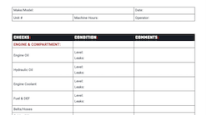Heavy-Duty Truck Sales Up 19.4% in June
This story appears in the July 23 print edition of Transport Topics.
Class 8 truck sales rose 19.4% in June over the year-ago level, extending a growth pattern that dealers and analysts said could be in jeopardy during the rest of 2012 because of growing economic uncertainty.
The sales increase to 17,484 units stretched the year-over-year growth to 30 consecutive months, and was the highest June total since 2006, according to WardsAuto.com statistics released July 12.
However, the gain in June was the slowest growth pace this year, trailing the average of 37.7% for the first six months of 2012.
The growth in June was the smallest monthly increase since December 2010 and, coupled with six straight months of declining new orders, led to lowered expectations for coming months.
“We see the market dropping off in the second half of this year,” said Dennis LeGrand, corporate new truck sales manager for Truck Country, Dubuque, Iowa, a Freightliner dealer with 12 locations in Iowa and Wisconsin. “It’s been a pretty good year up to this point.”
The main reason for the expected drop, LeGrand said, is “the lack of confidence about the direction the economy is heading.”
Two other factors, he said, are that fleets are continuing to run trucks longer and the possibility that some customers may be holding back to buy new Freightliner models that already meet 2014 emissions standards and will be available in 2013.
Smaller fleets, those with 200 to 800 power units, have picked up their purchasing pace this year, LeGrand said, helping to make 2012 the best first half in the past three years.
“Truck sales have remained re-markably consistent and strong, as well,” said Kenny Vieth, president of ACT Research Co., Columbus, Ind., while also noting that the second half will be a different story as orders wane.
“Current order rates make current build rates unsustainable,” which will force original equipment manufacturers to reduce production to match orders more closely, he told Transport Topics.
The order backlog has shrunk from 4.8 months in January to the June figure of 3.4 months, signaling production cuts ahead, Vieth said.
“While the market fundamentals still exist for a strong 2012, we believe that overall uncertainty in the economy is causing some customers to postpone their purchases,” said David Hames, general manager, marketing and strategy for Daimler Trucks North America. “In this challenging market, cost of operations, proven engine technology and overall reliability are driving forces in customers’ purchase decisions.”
Greg Arscott, general manager of the Pete Store, Piedmont, S.C., said that demand across the truck dealer’s eight locations in five states started strong this year before changing.
“As the second quarter wore on, for most every manufacturer and dealer there wasn’t that pop — that sense of urgency,” Arscott said, despite factors such as lower fuel prices.
The picture brightened recently as smaller fleets’ orders have picked up sharply, he said.
“People need to replace trucks,” Arscott said. “Last year, it was almost exclusively big fleets. The small guys didn’t want to talk new trucks — it was like selling ice to the Eskimos.”
“We believe the combination of excellent prices and low prices for fuel will lead some people to say, ‘This is a good time to buy a truck.’ ”
However, Arscott also noted caution among buyers who seem to be waiting to see what happens in the November elections.
“OEMs are likely to moderate build rates later in the year through extensions of planned seasonal shutdowns as they try to balance inventory control with an effort to avoid layoffs,” said Jefferies & Co. analyst Stephen Volkmann, adding that underlying demand remains solid and orders could increase this fall.
Like LeGrand, Hames and Arscott, Volkmann said he believes uncertainty is weighing on trucking markets. Lackluster freight demand and questions about Navistar’s future direction also are pressuring sales, Volkmann said in his report.
As a result of the recent trends, Volkmann scaled back the firm’s sales forecast by 10,000 trucks, or 3.6%, for North America, including the United States, Canada, Mexico and export markets.
The sales total for the first six months of 2012 was 99,246, the best first-half performance since 2006, Ward’s said.
DTNA’s Freightliner continued to lead, posting a 34.4% increase to 5,139 sales in June. Paccar’s nameplates showed growth, with Peterbilt at 2,687 tractors, or 18.7% higher, and Kenworth at 2,493 units, a 19.7% improvement.
Volvo Group, with a 31.4% sales increase for its Volvo nameplate to 2,208 units and a 32.4% rise at Mack Trucks to 1,744 sales, also reported increases.
Only Navistar’s International brand declined from June 2011, selling 3,010 tractors, an 8.8% drop. It was the first decline since May 2011, when Navistar was ramping up sales of its new 15-liter engine.
Kenworth, Peterbilt, Mack and Volvo are among the companies that are reporting second-quarter earnings later this month, but spokesmen for those firms declined to comment in advance of those reports. Navistar didn’t respond to requests for comment.
Freightliner sales in the first half climbed 34.5%, and International’s pace rose 25.5%.
Paccar’s nameplates rose the fastest for the six months, with a 56.6% increase at Kenworth and 49.4% gain at Peterbilt. Volvo sales rose 29.4% in the first half while Mack climbed 43.7%.


